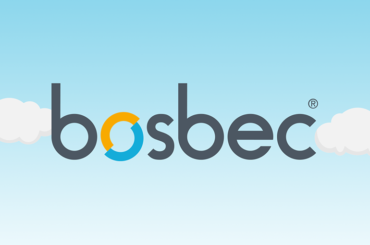Digital transformation doesn’t need to be complicated or even mysterious, for that matter. A low-code platform radically decreases the need for both the ability to code and IT experts. According to Gartner, low-code is estimated to account for 65 percent of all app development in 2024, and 75 percent of larger companies are expected to use at least four low-code tools.
For years now, Bosbec has provided a successful, graphical, and flow-based low-code tool. In this article, we explain why low-code is gaining more and more ground and how it can help your company’s operational processes.
Why low-code wins:
1. Agile responses to rapid changes
The increase of full-fledged digitalization has set the bar higher, and you need to be able to keep up. A few years ago, for example, you could survive with just one system solution catering to several different processes for a reasonably long time. But today, when there are hundreds, if not thousands, of processes that need to be automated and adjusted quickly due to, for example, new organizational structures, legal changes, etc., it’s not enough to buy individual systems. This is because it slows everything down and carries the constant risk of having to invest in yet another costly reprogramming effort.
There’s a saying:
“Why make life difficult when with a little effort, you can make it impossible.”
With low-code, you can avoid that trap.
2. Automation along every step of the way
Many companies tend to focus only on the user experience, but that’s just the tip of the iceberg here. A company contains a lot of operational processes (complaints, invoicing, delivery, etc.). One of the main reasons so many companies fail in their transformations is that they don’t consider these processes enough. Instead, they focus on streamlining production/processing, in other words, on the execution rather than the value for the process that’s actually being supported. For a successful digital transformation, you need to map out the customer journey and use it as a base for how to proceed. What processes are included? How can they be automated? The key to success here is that this should be easy and that the aspired results can be achieved quickly.
3. Think flow, not systems
The future is already here. To become a modern business, you need a new approach to IT: Think flow, not systems, to solve specific problems. Technology should support organizations to work according to the process the organization has set out to follow, not what the system demands.
- The service should be a cloud service to minimize operation and maintenance.
- Solutions should easily create all necessary functions.
- It must integrate with all of the organization’s external and internal services.
- Changes must be easy to implement and be carried out instantaneously.
- The focus must be on data and event-driven flow for maximum automation and continuous improvement.
- The solution must be able to connect systems, people, and devices across the organization and remove and minimize the “silos” created by programs and applications such as SAP, Teams, and Salesforce – with the goal of leveraging data from different sources for an optimal process.
- Must be able to handle process anomalies, i.e., if someone pays the wrong amount in an invoice process.
Bosbec’s platform
With this in mind, Bosbec has developed an agile, easy-to-use, and cost-effective tool for digital transformation based on low code and modules – building blocks – that can be linked together and automate all kinds of business processes.
Getting started
Step 1. Take our free self-assessment test to get a sense of the level of digitalization and automation you currently have in your company. It’s around 25 questions long and takes 15-20 minutes to do. You can do it here: Self-assessment test
Step 2. This is where you can start mapping out your processes, step by step, to see where automation might be needed. Bosbec can help you with this.
- Identify which existing processes should and can be optimized.
- Map out in which systems and other places (email, SMS, Excel, etc.) you can retrieve all the data you need.
- Analyze how you can integrate with systems and applications to get data to your flow (API, mail, file, etc.).
- Identify what decisions are needed in the process and what decisions can be made based on already existing data.
- What new data is required by the process, and how can that data be filled in (existing interface, new interface, etc.).
- Draw a chart of your flow, including how deviations from it should be handled
Step 3. Build your solution on the Bosbec platform.
You don’t need to know how to code or be tech-savvy in any way to do this. The platform consists of modules, almost like Lego, which you assemble to create your desired features. Sign up here!
If you have any questions or want help signing up, get in touch at support@bosbec.com or the help pages.



